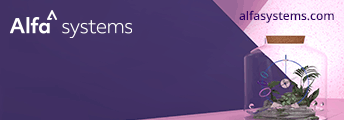
Whether you refer to them as “shadow” or “sunlight” banks, alternative sources for credit funding have existed for decades in the financial services industry.
Until the financial crisis, these non-traditional sources for lending experienced a steady increase in growth and revenues. During the crisis, like many traditional banks, these lenders scaled back their activity but have recently experienced exponential growth particularly in the consumer, residential mortgage, leveraged lending and small business arenas, with technology playing a major part in this growth.
Although newer distribution channels are being explored, when you analyze most non-traditional lending models it is abundantly clear that aside from referrals, new business is largely procured online.
The internet is a strong channel and offers convenience and ease-of-use most traditional lenders have not yet fully embraced. As an example, half of Funding Circle’s small business applications arrive after conventional business hours.
Non-traditional lending technology solutions automate large portions of the underwriting, pricing and processes to originate the loan while limiting human intervention, while algorithms and data are key to automating initial underwriting.
Injecting social media
Non-traditional lenders have found ways to inject social media into these models such as Yelp ratings, Facebook “likes” or even usage of logistics firms to assess how well small businesses are performing. This is then combined with hundreds of additional data points collected during the application process which can be augmented and readily incorporated into pricing and risk calculations.
However, complete reliance is not placed wholly on these models. They are used primarily to approve low-risk creditworthy applicants or decline those which do not meet product and program criteria. The end goal is to accumulate as much data about an applicant as possible to evaluate an applicant’s creditworthiness while promoting advancements in next generation algorithms.
These data points are also utilized to create a level of transparency to the investment community necessary to match providers of funding with users of funding. In short, this technology allows investors timely disclosure as well as accurate and abundant data.
Big data is an important consideration in the non-traditional lending model while traditional lenders have had considerable difficulty embracing and using this data. In cases where non-traditional lenders fund transactions themselves, technology is the differentiator as to why they can generate what are typically low margin lending businesses profitably which traditional lenders have exited.
$1 million to invest
One non-traditional lender was asked the question: “If you had one million dollars to invest in technology and no limitation on where it would be put to use, what would you do”? The reply: “Continued investment in making the user experience as convenient and accessible as possible”, supports the notion that non-traditional lenders are willing to invest and re-invest for continuous improvement - whereas banks have been more reluctant to do so due in part to legacy systems and their inability to integrate with newer technologies.
The contention is that non-traditional lenders are offering competitive pricing to transactions which banks are hesitant or unwilling to fund. To support this notion, non-traditional lenders cite a recent US Federal Reserve Bank study on small business declines which revealed that 45% of small business owners said they believed traditional lenders did not want to lend to their type of business.
This perception of traditional lenders fuels additional shortcomings such as them being: difficult to deal with; unwilling to adjust to a changing marketplace; or as commoditizers of relationships; all which have led to a lack of trust and supported the non-traditional lenders opportunity to be specialists in a particular lending line-of-business or product.
Proponents of the “shadow banking system” claim they fill a void in credit markets which are not being covered by traditional lenders. They see traditional lenders exiting lines of business due to the increased regulation, costs and competition.
Where these companies do offer lending products, compliance and brick and mortar overheads associated with full-service banking are being passed on to clients in the form of elevated rates and fees.
Elevated credit risk
Traditional lenders also have an elevated credit risk to legacy assets even after they no longer originate them unlike most non-traditional lenders who do not hold loans on their balance sheets. And for those who do, they are able to do it cheaper as a percentage of the unpaid balance than traditional lenders.
Non-traditional lenders will continue to create headwinds for traditional lenders in a variety of respects, with unique advantages such as having less regulatory overheads, not having to consider legacy IT systems in their technology stack, and a need to protect existing businesses in a fiercely competitive market.
Combined with exceptional responsiveness, non-traditional lenders are greatly influencing the behaviour of customers and setting new and higher expectations for traditional lenders.
Ron Meyer is a Senior Business Adviser at Linedata






